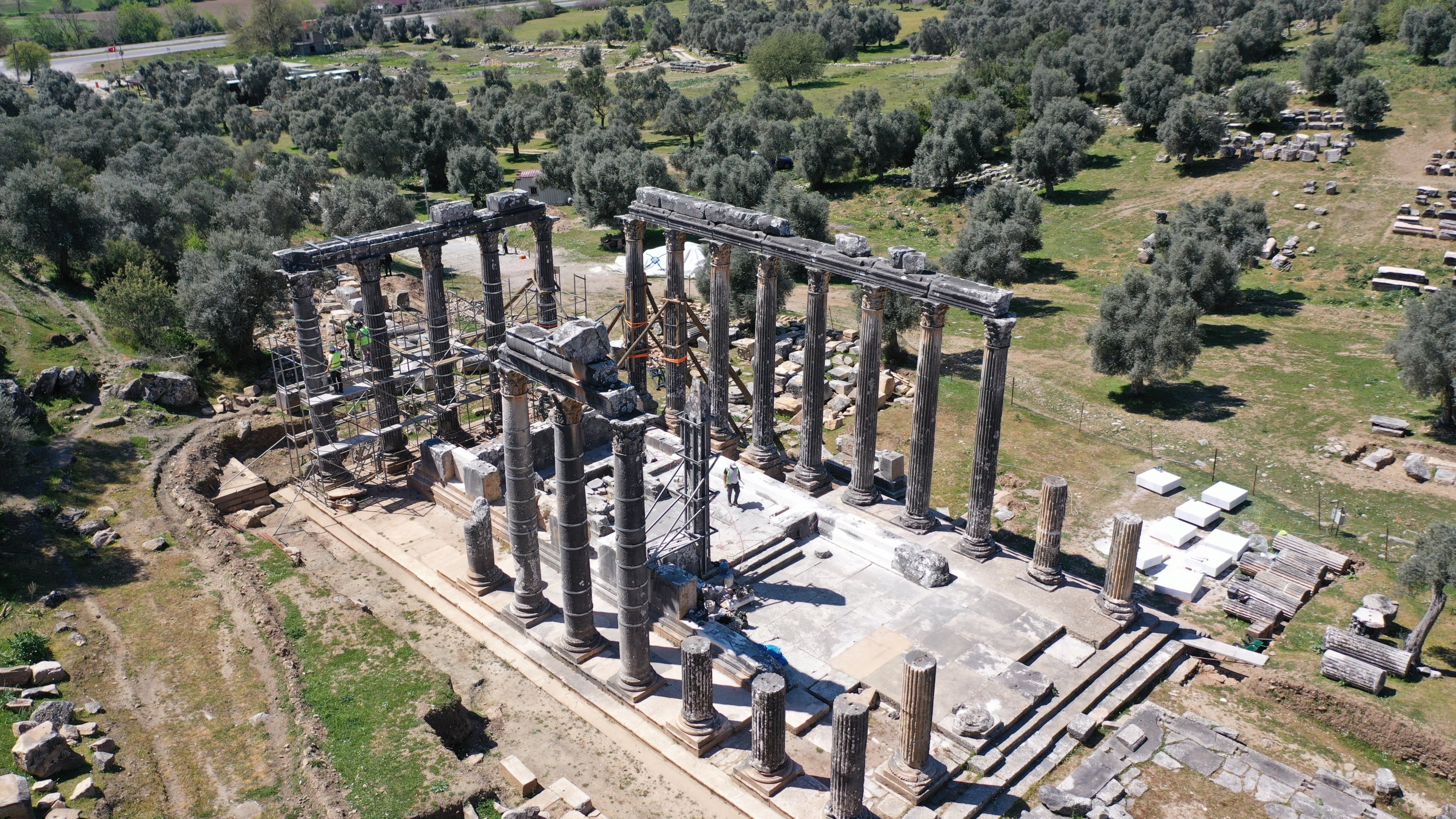© Turkuvaz Haberleşme ve Yayıncılık 2025
The Temple of Zeus Lepsynos in the ancient city of Euromos, located in the Milas district of southwestern Muğla province, is being restored to its former glory with the restoration of its columns.
Euromos is one of the important cities of Caria – the ancient name for the southwestern region of Anatolia's Aegean shores. The ancient city is a draw for visitors interested in discovering the area's historical richness and archaeological significance.
Euromos, dating back to 5 B.C., contains numerous interesting buildings, including the Temple of Zeus Lepsynos from the Roman times from the reign of Roman Emperor Hadrian between 117 and 138. The temple, dedicated to the Greek god, stood at the foothill of the city. With this temple, one of the best-preserved examples in Anatolia featuring an ancient theater, agora and necropolis, the site is ever-abuzz with visitors from across Turkey and beyond.
Excavations in Euromos were first carried out by Turkish archaeologists in the '70s and are still ongoing. The restoration of the Temple of Zeus Lepsynos has also been carried out meticulously in the ancient city, and the repair and strengthening works continue.
Associate professor Abuzer Kızıl from Muğla Sıtkı Koçman University’s Department of Archaeology, who is the head of the excavation in Euromos, said that they aim to restore the building to its former glory and preserve it for future generations.
Stating that they used 90% of the original architectural elements in the restoration of the temple, the classification works of which were completed, Kızıl said: "There were column drums, column capitals, architrave blocks, friezes and cornice blocks that we could use on every facade. We documented all of these materials and recorded them. And we are using these original materials in restorations."

Kızıl also said that they used practices of the ancient period as a basis for their studies. “We made the combinations of the materials by using iron, bronze and lead. As I have previously mentioned, most of the architectural structures we used in the restoration consist of original materials. In this framework, we first installed the lower drums of six columns in their original places. After that, we carried out the removal and disposal of the previously used concrete blocks. In the meantime, the cracks, wear and spalling in standing columns of the temple were also tried to be strengthened.”
According to the excavation head, they want to show the original state of the temple to visitors coming to the ancient city.

Explaining that they prepared a small number of missing architectural pieces with marble by using the original versions as examples to complete the restoration of the columns, Kızıl said: "All the stone needs of the ancient city of Euromos are supplied from the marble quarries on the mountain rising from the bottom of the temple. Visitors can easily observe how stones are quarried, how they are roughly processed, how they are brought to the temple and how the last works are done in the temple."
The works in the ancient city continue with the support of the Ministry of Culture and Tourism, the Turkish Historical Society (TTK), the General Directorate of Cultural Heritage and Museums, the Muğla Governorate, the Milas District Governorate and Muğla Sıtkı Koçman University.
